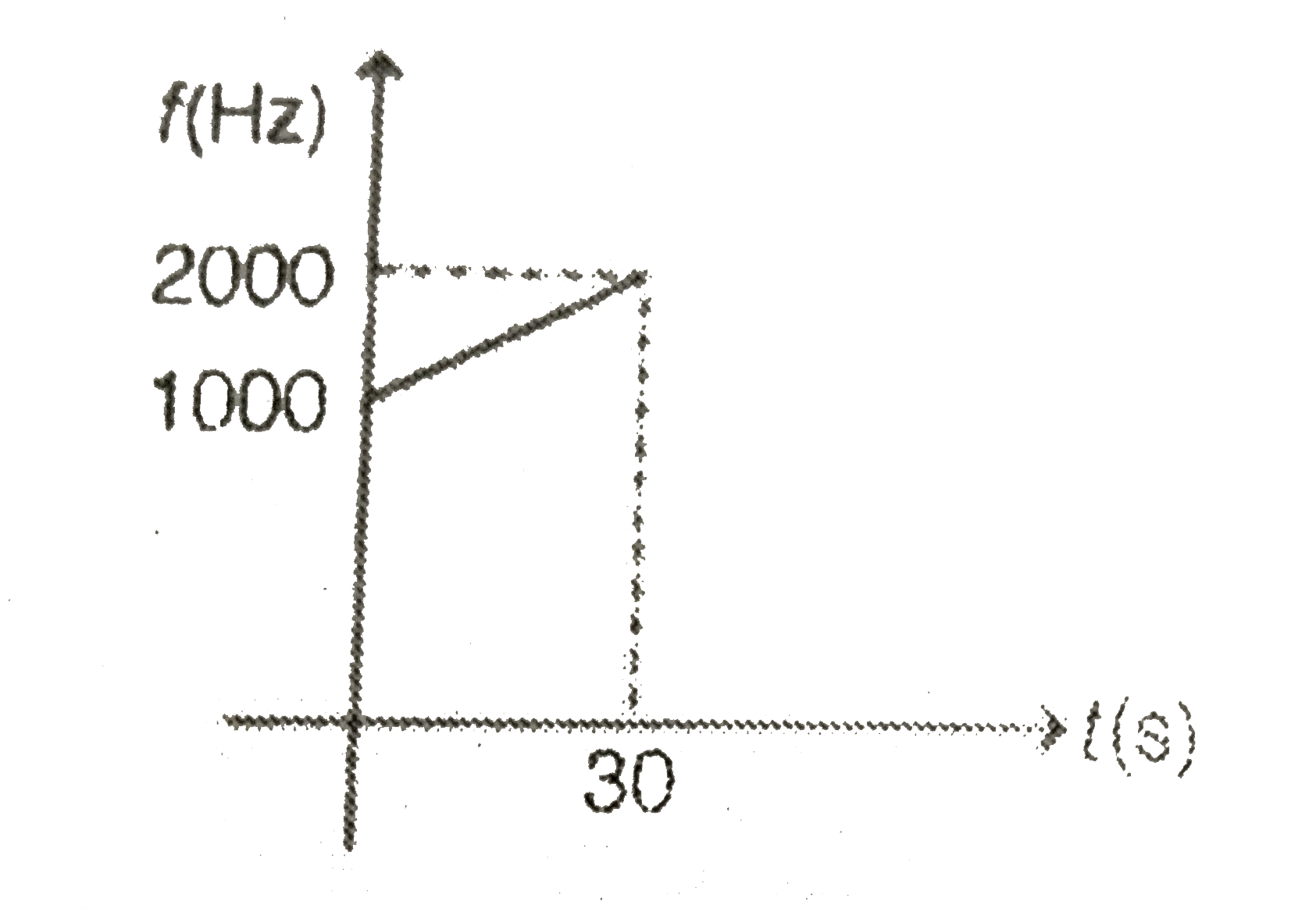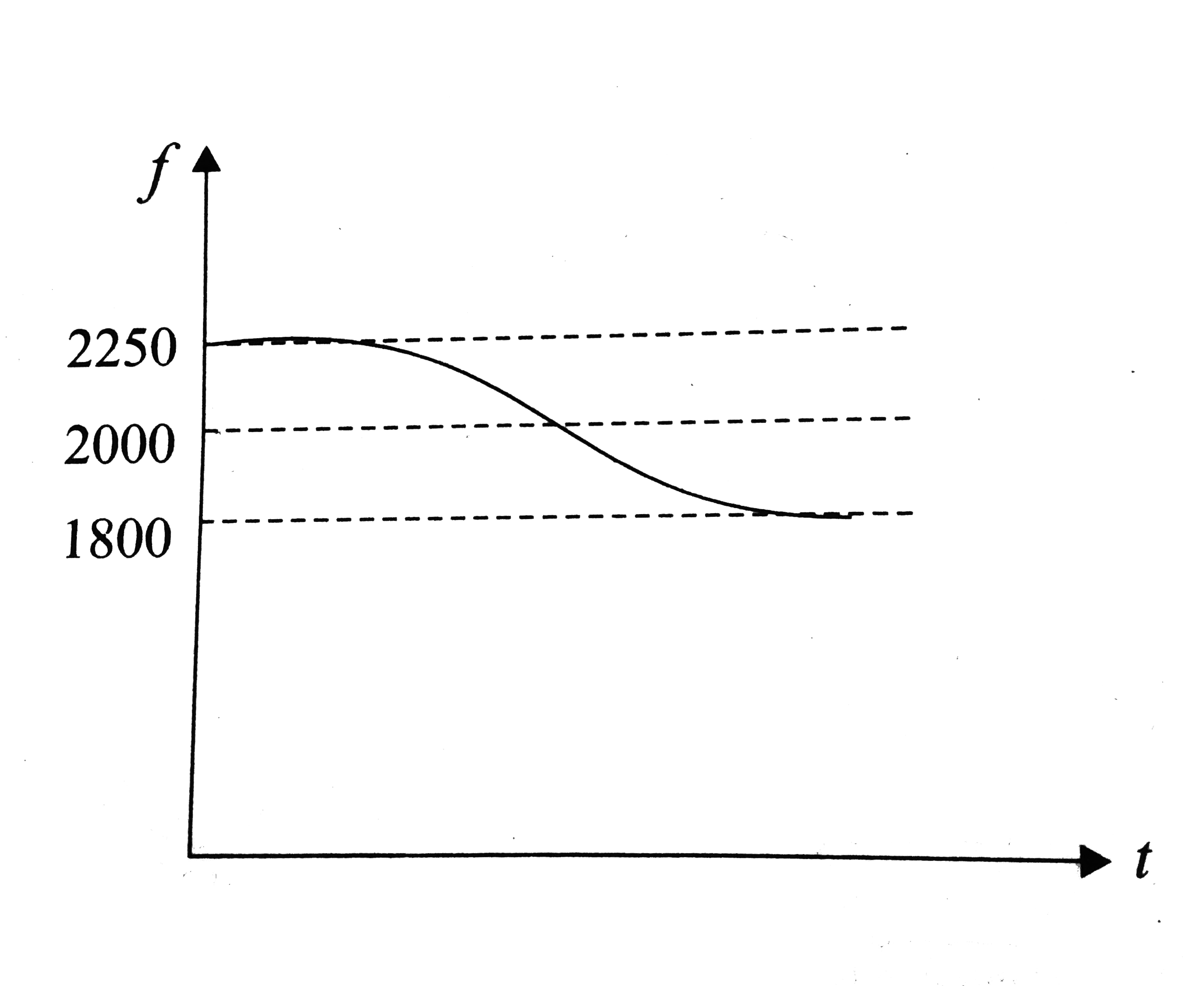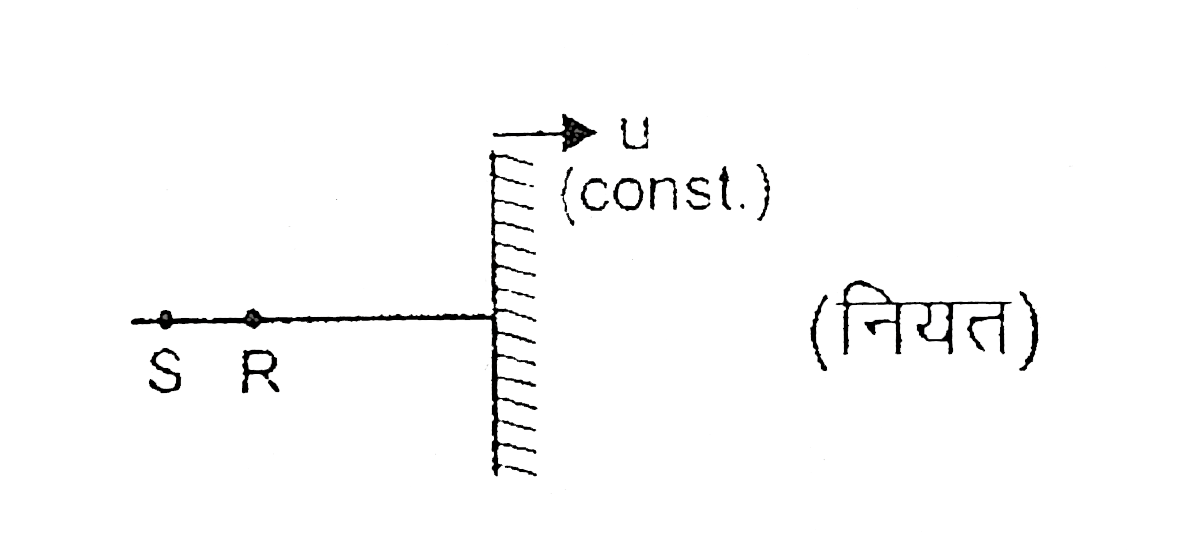Consider a souce of sound S, and an observer/detector D. The source emits a sound wave of frequency f0. The frequency observed by D is found to be (i) f1, if D approaches S and S is stationary
(ii) f2, if S approaches S and S is stationary
(iii) f3,if both S and D and D is stationary Speed
In all three cases, relative velocity of S wrt D is the same. For this situation which is incorrect?
n1=n2=n3
n1<n2
n3>n0
n3 lies between n1 and n2
The correct Answer is:B, C, D
To solve the problem, we need to analyze the three scenarios involving the source of sound S and the observer D in terms of the Doppler effect.
1. Understanding the Doppler Effect:
The Doppler effect describes the change in frequency or wavelength of a wave in relation to an observer moving relative to the wave source. The frequency observed depends on the relative motion between the source and the observer.
2. Case (i): Observer Approaching Source:
- When the observer D approaches the stationary source S, the observed frequency f1 can be calculated using the formula:
f1=f0(v+vDv)
Here, v is the speed of sound, and vD is the speed of the observer towards the source.
3. Case (ii): Source Approaching Observer:
- When the source S approaches the stationary observer D, the observed frequency f2 is given by:
f2=f0(vv−vS)
Here, vS is the speed of the source towards the observer.
4. Case (iii): Both Source and Observer Moving:
- If both S and D are moving towards each other, the observed frequency f3 can be expressed as:
f3=f0(v+vDv−vS)
In this case, both the observer and the source contribute to the change in frequency.
5. Analyzing the Frequencies:
- We need to compare f1, f2, and f3:
- In case (i), f1 will be greater than f0 since the observer is moving towards the source.
- In case (ii), f2 will also be greater than f0 since the source is moving towards the observer.
- In case (iii), f3 will be the highest because both the source and observer are moving towards each other.
6. Conclusion:
- The incorrect statement among the options given is that f1, f2, and f3 are equal. This is not true as we have shown that f1<f3 and f2<f3.
Final Answer:
The incorrect statement is that f1=f2=f3.
---
The Doppler effect describes the change in frequency or wavelength of a wave in relation to an observer moving relative to the wave source. The frequency observed depends on the relative motion between the source and the observer.
- When the observer D approaches the stationary source S, the observed frequency f1 can be calculated using the formula:
f1=f0(v+vDv)
Here, v is the speed of sound, and vD is the speed of the observer towards the source.
- When the source S approaches the stationary observer D, the observed frequency f2 is given by:
f2=f0(vv−vS)
Here, vS is the speed of the source towards the observer.
- If both S and D are moving towards each other, the observed frequency f3 can be expressed as:
f3=f0(v+vDv−vS)
In this case, both the observer and the source contribute to the change in frequency.
- We need to compare f1, f2, and f3:
- In case (i), f1 will be greater than f0 since the observer is moving towards the source.
- In case (ii), f2 will also be greater than f0 since the source is moving towards the observer.
- In case (iii), f3 will be the highest because both the source and observer are moving towards each other.
- The incorrect statement among the options given is that f1, f2, and f3 are equal. This is not true as we have shown that f1<f3 and f2<f3.
The incorrect statement is that f1=f2=f3.
Topper's Solved these Questions
- SOUND WAVES AND DOPPLER EFFECTBOOK - CENGAGE PHYSICS ENGLISHCHAPTER - SOUND WAVES AND DOPPLER EFFECTEXERCISE - Assertion-Reasoning
24 Videos
- SOUND WAVES AND DOPPLER EFFECTBOOK - CENGAGE PHYSICS ENGLISHCHAPTER - SOUND WAVES AND DOPPLER EFFECTEXERCISE - Comprehension
144 Videos
- SOUND WAVES AND DOPPLER EFFECTBOOK - CENGAGE PHYSICS ENGLISHCHAPTER - SOUND WAVES AND DOPPLER EFFECTEXERCISE - Single Correct
252 Videos
- RIGID BODY DYNAMICS 2BOOK - CENGAGE PHYSICS ENGLISHCHAPTER - RIGID BODY DYNAMICS 2EXERCISE - Interger
2 Videos
- SUPERPOSITION AND STANDING WAVESBOOK - CENGAGE PHYSICS ENGLISHCHAPTER - SUPERPOSITION AND STANDING WAVESEXERCISE - Comprehension Type
5 Videos
Similar Questions
Consider a source of sound S, and an observer P. The source emits sound of frequency N0. The frequency observed by P is found to be N1 if P approaches S at a speed v and S is stationary; N2 if S approaches P at a speed v and P is stationary and N3 if each of P and S has speed v/2 towards one another
View SolutionA detector is released from rest over a source of sound of frequency f0=103Hz. The frequency observed by the detector at time t is plotted in the graph. The speed of sound in air is (g=10m/s2)

View Solutiona bus is moving towards and stationary observer with speed 20 m/s blows a horn of frequency 200 Hz. the frequency of sound heard by the observer is approximately ( take speed of sound 320 m/s)
View SolutionA source of sound of frequency 500 Hz is moving towards an observer with velocity 30 m/s . The speed of sound is 330 m/s . the frequency heard by the observer will be
View Solution
A statinary observer receives a sound of frequency 2000 Hz. The variation of apparent frequency and time is shown. Find the speed of source, if velocity of sound is 300ms
View Solutionwhen a source of sound of frequency f crosses stationary observer with a speed vs(<< speed of sound v) , the apparent change in frequency Δf is given by
View SolutionSpeed of sound wave is v. If a reflector moves towards a stationary source emitting waves of frequency f with speed u, the wavelength of reflected waves will be
View SolutionA source of sound of frequency 600Hz is placed inside of water. The speed of sound is water is 1500m/s and air it is 300m/s. The frequency of sound recorded by an observer who is standing in air is
View SolutionThe ratio of the apparent frequencies of a car when approaching and receding a stationary observer is 11:9 What is the speed of the car, if the velocity of sound in air is 330 m/s?
View SolutionS is source R us reciver. R and S are at rest. F Frequency of sound from S is f. The beat frequency registred by R is kufv+u, Find k. Given, velocity of sound is v.

View Solution
